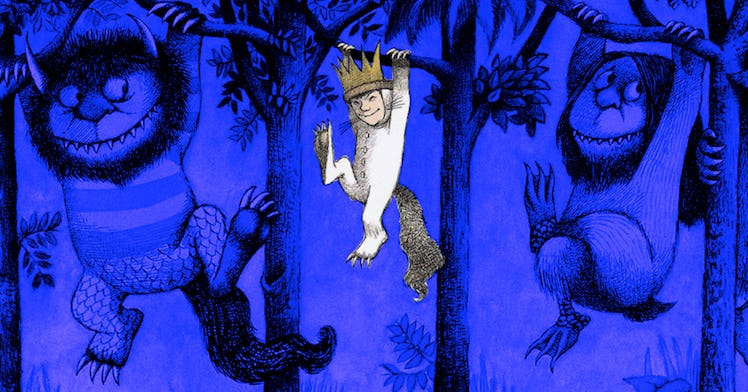The Bizarre Secret Hidden in ‘Where The Wild Things Are’
My toddler has found the oddest thing hidden in plain sight in the pages of the Maurice Sendak classic.

What kind of monsters are the titular Wild Things of Where the Wild Things Are? The knee-jerk answer is that it doesn’t matter since all of it exists in Max’s imagination. The 2009 Spike Jonze film adaptation of the 1963 Maurice Sendak picture book muddies the waters a bit, if only because Max actually leaves his room and takes a boat to where the Wild Things are, rather than, you know, imagining all of it happening in his room. Either way, there seems to be some set of internal rules governing the Wild Things, otherwise, we wouldn’t really care. To paraphrase Dumbledore, just because something exists entirely in your mind, doesn’t mean it’s not “real.” So, the Wild Things have some guidelines as to when rumpuses begin and end, and they have some sort of ethical code as to who they eat-up and who they don’t.
So, why, I ask, do some of the Wild Things have bizarre human noses, while the other ones do not? Full disclosure, this revelation was not mine. Recently, my three-year-old (who has weaponized the word “rumpus”) pointed at the pages of the book, and said, “Dad, why do some of them have HUMAN noses?” She said this like she was offended and disturbed, and I couldn’t blame her. The brilliance of the Wild Things is that they are (mostly) creepy chimeras of various animal parts. Any metaphorical relationships the Wild Things have to actual “people” in the life of Max is better left to the musings of Dave Eggers, and frankly, not something I think about when I read the book to my daughter. Plus, it doesn’t help to answer a 3-year-old’s question of why.
Credit: Maurice Sendak
Ask an adult why some of the Wild Things have “human noses,” and they’ll say: Because the Wild Things are imaginary. But, try that answer out with a 3-year-old. You see the problem right away. When a 3-year-old asks you “why” relative to the constructs of a made-up-fantasy world, the distinction between a daydream world in Sendak, and a fully-realized fantasy kingdom like Narnia is razor-thin.
The reason why my daughter objects to the (roughly two) Wild Things with “human noses,” is that it’s inconsistent with the subtle world-building of the rest of the book. As any parent knows, telling a 3-year-old “that’s just the way it is” works just about as well in real life as it does with islands populated by yellow-eyed, hungry monsters. An answer — even one that exists in your mind, and then filtered for your child — has to exist. And, if the answer is Doylist – I.E. they look that way because Sendak drew them that way – then you’re a bad parent. You need a Watsonian, in-universe answer to the question to play by the same rules as your kids’ imagination. (I’ll also note that the Wild Thing with the most human nose of all doesn’t look that different from my own nose.)
My personal Wild Things fan-theory is that the island of the Wild Things exists in a kind of Island of Doctor Moreau scenario. At some point, all of these chimeras were experiments gone awry, and tragically, before the story begins, a mad scientist spliced Wild Things with humans, hence the existence of human noses. This answer happens to fit the facts, but that doesn’t mean it’s the right one for my 3-year-old. I have considered telling her that all the Wild Things are genetic experiments, but the story is heavy enough already, don’t you think?
The first time my kid asked me about the human noses was pretty recently, and I have to admit my first answer was weak but honest, “I’m not sure.” After that, I’ve been torn between, saying “there are a lot of kinds of Wild Things,” OR “Sorry honey, the Wild Things are aberrations of the natural world” before going full-Jeff Goldblum in Jurassic Park.
What’s the right answer? I’m not totally sure, but if any parents face a similar conundrum, this is what I’ve come up with. If my daughter asks why these grotesque mutants occasionally have human noses, I think the best answer is this: You know what? The Wild Things are people, too.
This article was originally published on